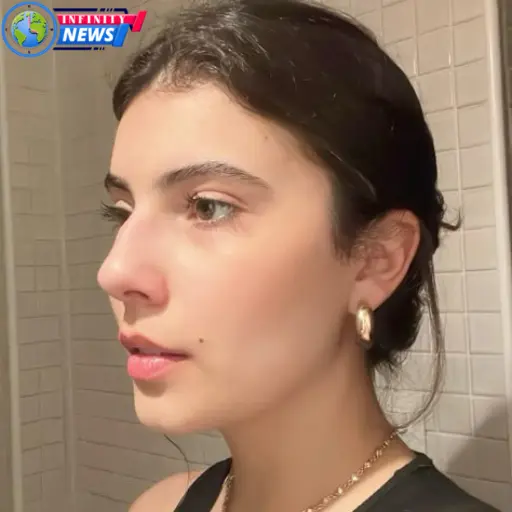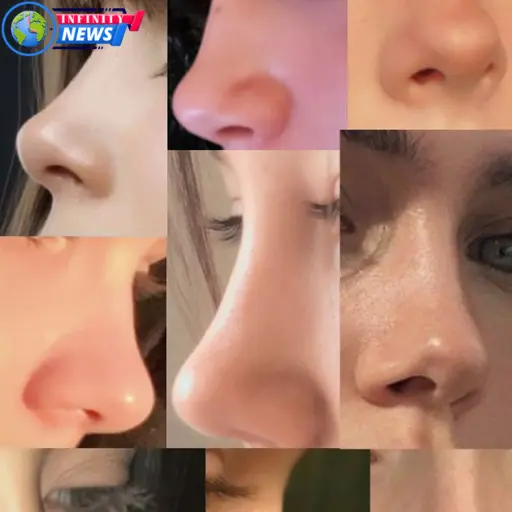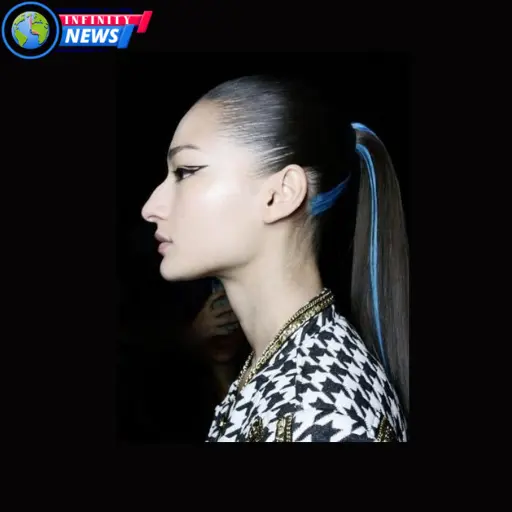1. why do black people have big noses: A Question Rooted in Curiosity or Bias?
why do black people have big noses? It’s a question that pops up in search engines more often than you’d expect and it reflects more than just curiosity. Behind this search lies a mix of cultural bias, limited education about genetics, and misunderstanding of human evolution.

The truth is, nose shapes differ across all races and regions, and they do so for good scientific reasons. People of African descent, for example, often have wider nasal bridges and broader nostrils, traits that evolved over time in response to warm, humid climates. But describing these natural features as simply “big” lacks accuracy and context.
why do black people have big noses This article will explore how genetics, climate adaptation, and evolutionary biology play roles in shaping our noses. We’ll also discuss how cultural perceptions of facial features especially in Black communities have been influenced by media stereotypes and outdated beauty standards.
2. Human Evolution and the Nose: Built for Survival
Our noses are more than just features on our faces they’re survival tools shaped by nature. Through evolutionary biology, we’ve learned that nose shape is closely linked to the environment our ancestors lived in. So, when we ask “why are noses different?”, the answer often starts with climate adaptation.

People whose ancestors lived in hot, humid climates like many regions in Africa typically have wider nostrils and a broader nasal structure. These features help air move more efficiently and stay moist before it reaches the lungs. In contrast, those from colder, drier regions evolved narrower noses to warm and humidify the air during breathing.
This isn’t exclusive to Black people nasal shape varies across all races, including Indigenous Australians, Southeast Asians, and Northern Europeans. Each variation has a functional purpose, not just an aesthetic one.
Understanding the evolutionary reason behind nose shape helps us see physical differences as fascinating results of human adaptation not as flaws. It’s nature’s design, shaped by climate and passed down through generations.
3. How Genetics Build Our Faces
Our facial features, including nose shape, are primarily shaped by our genes. These genes determine traits like the width of the nostrils, the height of the nasal bridge, and the length of the nose. This is why family members often share similar nasal structures it’s all about heredity.
Research shows that certain genetic variations are more common in specific populations. For instance, wider noses are more prevalent among people of African, Southeast Asian, and Indigenous ancestry, while narrower noses are often seen in European and some East Asian groups. These differences are natural expressions of ethnic traits, not abnormalities.
It’s important to understand that genetic diversity exists not just between racial groups but within them, too. No two faces are exactly alike even among relatives. By recognizing the role of genetics in nose shape, we gain a deeper appreciation for the rich variety of human appearance and the biology behind it.
4. African Descent and Nasal Traits: What’s Common why do black people have big noses?
Many people of African descent share distinctive nasal features such as flared nostrils, a wider nasal base, and a flatter nasal bridge. These are not random traits they are ancestral adaptations shaped by centuries of survival in warm, humid climates.
One of the most common questions people ask is: why do black people have big noses? The answer lies in biology. In tropical regions, broader nasal passages helped with efficient airflow and better moisture control during breathing. These ancestral nose shape adaptations were passed down through generations.
It’s important to note that there’s significant variation even within African populations. Not everyone of African descent has the same nose shape, just as not all Europeans or Asians share the same facial traits. These ethnic differences in nose structure are part of the beautiful complexity of human evolution.
If using visuals, showing a global comparison of nose shapes by race can further highlight how environment and genetics have worked together across populations.
5. Beyond Black and White: Global Nose Shape Diversity why do black people have big noses
When people think of wide noses, they often associate them primarily with Black populations. But the truth is, broad nasal features are seen across many ethnic groups around the world.
For example, Indigenous Australians often have wide nasal passages similar to those of African descent an adaptation to hot, dry climates. In Southeast Asia, many populations have flatter nasal bridges and wider nostrils. These traits are not exclusive to any one race but are the result of evolutionary pressures shaped by environment and geography.
In contrast, Northern Europeans whose ancestors lived in colder climates developed narrower noses to better warm and humidify the air they breathed. This wide range of nose shape differences across races shows how human anatomy adapts to different environmental needs.
Recognizing this global nasal diversity breaks down harmful stereotypes. It reminds us that wide noses aren’t “unusual” or “exotic” they’re simply part of humanity’s natural, functional, and beautiful variation.
why do black people have big noses Beyond Black and White: Global Nose Shape Diversity
When we discuss nose shape diversity, it’s essential to look beyond Black populations, as wide noses are not exclusive to any one group. For example, Indigenous Australians have wide nostrils and flatter nasal bridges, similar to those found in African-descended populations. This trait has evolved to help with breathing in hot, dry climates, demonstrating how environmental adaptation has shaped facial features across the world.
Similarly, Southeast Asians often have broader noses with flatter bridges. The wider nasal passages help manage the humid, tropical air found in these regions, supporting efficient airflow and moisture control traits that are functionally advantageous, just like those seen in many African populations.
On the other hand, Northern Europeans typically have narrower noses. This is due to evolutionary adaptations to colder climates, where narrower nostrils help warm and humidify the air before it reaches the lungs.
This shows that wide noses are not exclusive to Black populations. Rather, they are part of a global spectrum of nasal features, each shaped by evolution and climatic conditions. Recognizing this diversity underscores the beauty of human adaptation, regardless of race.
Wide Noses Are Not Exclusive to Black Populations
It’s a common misconception that wide noses are only a characteristic of Black people, but this simply isn’t true. While wider nostrils and flatter nasal bridges are often associated with African descent, these features are present in many different populations worldwide, each with its own evolutionary context.
For example, Indigenous Australians, who live in similarly warm and dry climates, also exhibit broad nasal passages a trait designed to help with efficient airflow and moisture regulation in hot environments. Similarly, Southeast Asians often have wider noses, which serve a similar functional purpose in humid regions where better air moisture retention is necessary.
On the other hand, populations from colder climates, such as Northern Europeans, typically have narrower noses. This adaptation helps to warm cold, dry air before it reaches the lungs, demonstrating how nose shape varies depending on geography and environmental needs.
By recognizing that wide noses are not exclusive to Black populations, we can better appreciate the diversity of human nasal features across the globe, each serving a distinct biological function that reflects the environment in which these populations evolved.
6. The Language of Looks: why do black people have big noses
The language we use to describe facial features, especially when talking about ethnic characteristics, can carry significant bias. Terms like “big noses” or “flat noses” are often loaded with negative connotations, influencing how we perceive and judge others. This kind of judgmental language can reinforce harmful stereotypes and shape our understanding of what’s considered “normal” or “beautiful.”

For example, when we refer to Black noses as “big” or “wide,” the term often carries an implicit value judgment, suggesting that these features are somehow less desirable or “unnatural.” Similarly, describing Asian noses as “flat” or “short” can perpetuate narrow standards of beauty that exclude a wide variety of natural ethnic features.
To break free from these biased descriptions, we can reframe our language through scientific neutrality. Instead of labeling a nose as “big” or “flat,” it’s more accurate and respectful to describe it by its specific anatomical traits: wider nostrils, flatter bridges, or broader nasal bases. These terms are more precise and grounded in biology rather than subjective opinion.
7. Plastic Surgery, Identity & Pressure
The rise of cosmetic rhinoplasty surgery to reshape the nose has become increasingly popular in communities of color, including among Black, Latino, and Asian populations. This trend is largely influenced by societal pressures and beauty standards often dominated by Western ideals. For many, the desire to alter nose shape stems from a desire to conform to these standards, which typically favor narrower, more “European” features.
However, the importance of maintaining ethnic identity during these procedures is crucial. Ethnic rhinoplasty is a term that refers to nose surgeries performed in a way that retains the natural characteristics of a person’s ethnic heritage. For example, it’s important for individuals of African descent to preserve the wider nostrils and flatter nasal bridge that are part of their ancestral traits, rather than adopting a completely Westernized, narrow nose.
The pressure to undergo rhinoplasty can sometimes create a conflict between cultural pride and the desire to fit into mainstream beauty ideals. Therefore, it’s essential for cosmetic surgeons to understand the importance of preserving an individual’s unique ethnic features, ensuring that they feel empowered to embrace their natural look.
Increased awareness of ethnic rhinoplasty and the importance of keeping cultural identity intact has led to a more respectful and tailored approach to cosmetic surgery in diverse populations. As beauty standards evolve, it’s important to remember that authenticity and individuality should always be prioritized.
8. The Rise of Representation in Beauty
In recent years, the beauty industry has seen a powerful shift toward diverse beauty models. As beauty standards evolve, there is a growing recognition that beauty doesn’t fit a single mold it comes in all shapes, sizes, and features. This change is particularly important for communities of color, as more people are seeing themselves represented in advertising, fashion, and social media.

The influence of social media has been instrumental in this shift. Platforms like Instagram, TikTok, and YouTube allow individuals from all over the world to share their unique looks, including their natural facial features. This visibility has led to a celebration of ethnic diversity in beauty, with more emphasis on real, unfiltered beauty that embraces ethnic traits from wide noses to fuller lips to textured hair.
Celebrities and influencers, many of whom are from diverse backgrounds, are playing a key role in redefining beauty. Icons like Lupita Nyong’o, Rihanna, and Priyanka Chopra are helping to normalize beauty standards that reflect the full spectrum of human diversity. Their influence is showing the world that beauty isn’t just about conforming to one ideal it’s about embracing what makes us unique.
This rise in representation is more than just a trend it’s a movement toward a more inclusive and authentic definition of beauty. As more voices are heard, we are collectively reshaping what it means to be truly beautiful, celebrating individuality and diversity along the way.
9. Educational Resources for Deeper Learning to why do black people have big noses
If you’re looking to explore the relationship between race, biology, and beauty standards in greater depth, here are some excellent resources that offer valuable insights into these complex topics.
Books:
- “The Beauty Myth” by Naomi Wolf
This groundbreaking book discusses the ways in which societal beauty standards are imposed on women and how they shape self-esteem and identity, with a focus on the intersection of gender and race. - “Whiteness of a Different Color” by Matthew Frye Jacobson
This book explores how the concept of whiteness has evolved in American history and how it intersects with race and physical appearance, helping readers understand how beauty standards have been racialized over time. - “The Social Life of DNA: Race, Reparations, and Reconciliation After the Genome” by Alondra Nelson
This book examines how genetics has been used to shape racial categories and discusses the politics surrounding race and biological diversity in contemporary society.
Studies & Articles:
- “Nose Shape and Human Evolution” by Michael J. H. McCollough
This study explores how nose shapes vary across different populations and the environmental and genetic factors influencing their development, offering scientific perspectives on human facial anatomy. - “Racialized Beauty: Examining the Beauty Bias in Media” (Journal of Cultural Studies)
A research article exploring how beauty standards are often shaped by racial bias and how the media perpetuates these standards, particularly in Black and Asian communities. - “The Evolution of Human Nose Shape” by H. D. Goodall et al.
This article delves into the evolutionary reasons behind different nasal shapes, exploring how various human populations adapted to their environments.
Documentaries:
- “13th” (Directed by Ava DuVernay)
While this documentary primarily focuses on race and the criminal justice system, it also touches on how societal structures have historically shaped racial perceptions, including beauty ideals. - “The Mask You Live In” (Directed by Jennifer Siebel Newsom)
This documentary focuses on masculinity and societal expectations but offers crucial insights into how men, particularly men of color, are influenced by beauty standards. - “Race: The Power of an Illusion” (PBS Documentary)
A powerful series that explores the concept of race, its biological basis (or lack thereof), and how physical traits like nose shape are often misunderstood and racialized in Western societies.
Websites & Online Resources:
- The American Anthropological Association (AAA) – Offers research and articles related to human evolution, including how physical features like nose shape have evolved.
- The Beauty Ideal Project – An ongoing exploration of how beauty standards have been racialized and how they are shifting in modern society.
These resources provide a comprehensive look at the intersection of race, biology, and beauty standards, allowing you to dive deeper into understanding how these concepts are shaped by both science and society. Educating ourselves on these topics is a vital step in dismantling stereotypes and fostering a more inclusive world.
FAQs About why do black people have big noses
1. why do black people have big noses?
The wider nose trait commonly seen in Black populations is an evolutionary adaptation to hot, humid climates. Wider nostrils and a flatter nasal bridge help with efficient airflow and moisture retention, essential for breathing in tropical environments.
2. Are wide noses exclusive to Black people And Solve why do black people have big noses?
No, wide noses are not exclusive to Black populations. They can also be found in Indigenous Australians, Southeast Asians, and other ethnic groups living in warm, humid climates. These features are ancestral adaptations to environmental conditions, not a racial anomaly.
3. How does climate affect nose shape?
Nose shape is heavily influenced by climate adaptation. In warmer, humid climates, people tend to have wider nostrils to manage moisture, while those from colder, drier climates often have narrower noses to warm and humidify the air before it reaches the lungs.
4. Why is there so much pressure to change nose shape through surgery?
Pressure to change one’s nose shape often stems from societal beauty standards that favor narrower, “European” features. This can lead people in communities of color to undergo cosmetic rhinoplasty in an effort to conform to these standards. It’s important to recognize that ethnic identity should be maintained in aesthetic procedures to preserve cultural uniqueness.
5. What is ethnic rhinoplasty?
Ethnic rhinoplasty refers to nose surgeries that aim to enhance features while preserving the unique aspects of an individual’s ethnic background. For example, people of African descent may seek rhinoplasty that retains their wider nostrils and flatter nasal bridge, rather than conforming to Western beauty ideals.
6. How has social media changed beauty standards?
Social media platforms like Instagram and TikTok have allowed individuals to embrace and celebrate diverse beauty standards, including a wide range of ethnic traits. These platforms provide visibility for people of all races to show their natural, unaltered facial features, challenging traditional beauty norms and encouraging acceptance of global diversity.
7. What role does representation play in beauty standards?
Representation in beauty, through celebrities and influencers from diverse racial and ethnic backgrounds, has been pivotal in changing global beauty standards. Icons like Lupita Nyong’o and Rihanna help normalize ethnic features and celebrate beauty beyond the traditional, narrow Western ideal.
8. Can I learn more about race and beauty standards?
Yes! There are many resources, such as books, studies, and documentaries, that dive deep into the intersections of race, biology, and beauty standards. Some recommended resources include Naomi Wolf’s “The Beauty Myth” and the PBS documentary “Race: The Power of an Illusion”, which explore how these concepts have shaped societal perceptions and standards.
Final Verdict: Understanding Nose Shapes, Beauty Standards, and Ethnic Diversity
This article takes a deep dive into the fascinating world of nose shapes, focusing on the genetic, environmental, and cultural factors that shape how we perceive and appreciate ethnic diversity in facial features. It clears up misconceptions about why certain traits, like wide noses or flatter nasal bridges, are commonly associated with Black people and highlights that these features are not exclusive to any one group. Rather, they are evolutionary adaptations that can be found across diverse populations, including Indigenous Australians, Southeast Asians, and others who have lived in climates that required such adaptations for survival.
For More information click here Button Nose Achieve the Perfect Button Nose with Rhinoplasty
